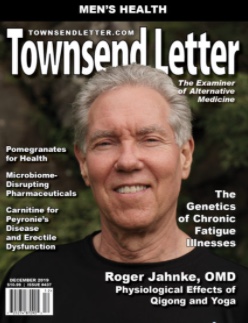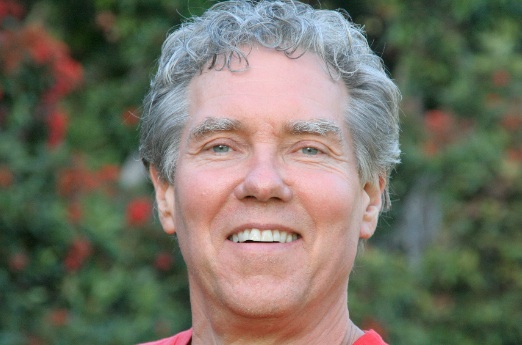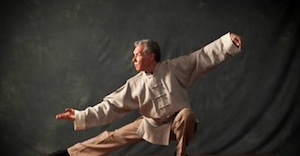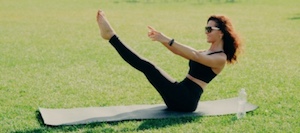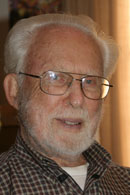Whole body vibration is part of many types of Qigong, including spontaneous Qigong and Emei Qigong

The Clinical Utility of Whole Body Vibration: A Review of the Different Types and Dosing for Application in Metabolic Diseases. WBV has been a popular area of research in recent years due to its potential physiological and therapeutic benefits in both health and disease. PMCID: PMC11396361.
The effects of whole-body vibration therapy on immune and brain functioning: current insights in the underlying cellular and molecular mechanisms. PMCID: PMC11323691.
Whole-Body Vibration to Improve Physical Function Parameters in Nursing Home Residents Older than 80 Years: A Systematic Review with Meta-Analysis. WBV may be an effective intervention to improve the strength, balance, mobility, walking ability, and physical performance of older nursing home residents. PMID: 38423527.
Whole Body Vibration Improves Brain and Musculoskeletal Health by Modulating the Expression of Tissue-Specific Markers: FNDC5 as a Key Regulator of Vibration Adaptations. Whole body vibration (WBV) is well known to exert beneficial effects on multiple tissues, improving synaptic transmission, muscle mass, bone quality, and reducing anxiety and depressive behavior. Different organs or tissues have different susceptibility to vibration. PMC9498983.
Mood regulates the physiological response to whole-body vibration at low intensity. A positive affective state determined greater changes in ANS activity in response to vibration variations compared to a negative affective condition. PMID: 36577272.
Whole Body Vibration: A Valid Alternative Strategy to Exercise? Several studies agree that mechanical vibration can induce physiological changes at different levels, improving neuromuscular function through postural control strategies, muscle tuning mechanisms and tonic vibration reflexes. Whole-body vibration has also been reported to increase bone mineral density and muscle mass and strength, as well as to relieve pain and modulate proprioceptive function in patients with osteoarthritis or lower back pain. Furthermore, vibratory training was found to be an effective strategy for improving the physical performance of healthy athletes in terms of muscle strength, agility, flexibility, and vertical jump height. Notably, several benefits have also been observed at the brain level, proving to be an important factor in protecting and/or preventing the development of age-related cognitive disorders. PMID: 36412761.
Whole Body Vibration Improves Brain and Musculoskeletal Health by Modulating the Expression of Tissue-Specific Markers: FNDC5 as a Key Regulator of Vibration Adaptations. Whole body vibration (WBV) is well known to exert beneficial effects on multiple tissues, improving synaptic transmission, muscle mass, bone quality, and reducing anxiety and depressive behavior...results suggest that the WBV effects depend closely on the type of protocol used and support the hypothesis that different organs or tissues have different susceptibility to vibration [which would be a necessary condition for Qigong Healing Sounds]. PMCID: PMC9498983.
Systematic Review and Meta-analyses on the Effects of Whole-body Vibration on Bone Health. Whole body vibration may be clinically useful as non-pharmacological/adjunct therapy to mitigate osteoporosis risk in healthy postmenopausal females. Additional studies are needed to determine the underlying mechanisms. PMID: 35093509.
Use of surface electromyography to evaluate effects of whole-body vibration exercises on neuromuscular activation and muscle strength in the elderly: a systematic review. Whole-body vibration exercise is a training modality that increases neuromuscular activation and muscle strength PMID: 34699285.
Psychological Effects of Whole-Body Vibration Training in Frail Older Adults: An Open, Randomized Control Trial. Beneficial effects remained for at least 6-month post-intervention. Further WBV benefits were observed in activity, mobility, and self-care elements of quality of life. Sixteen weeks of low-level WBV exercise is sufficient to enhance frail older adults' falls-related confidence, quality of life, and functional independence PMID: 34348227.
Effectiveness of whole-body vibration or biofeedback postural training as an add-on to vestibular exercises rehabilitation therapy in chronic unilateral vestibular weakness: A randomized controlled study. Whole-body vibration (WBV) is a mechanical vertical stimulation that provides high frequency vibration stimulus to the proprioceptive receptors. Patients in the WBV group obtained statistically significant gains in balance control. PMID: 33459675.
Whole-Body Vibration Training Increases Stem/Progenitor Cell Circulation Levels and May Attenuate Inflammation. Whole-body vibration has positive vascular and anti-inflammatory effects.
Effects of whole-body vibration and high impact exercises on the bone metabolism and functional mobility in postmenopausal women. Whole body vibration (WBV) can prevent bone loss in postmenopausal women. These findings also indicate that WBV and high-impact training programs improve functional mobility, health-related quality of life, and depressive symptoms in postmenopausal women.
Tai Chi and whole-body vibrating therapy in sarcopenic men in advanced old age: a clinical randomized controlled trial. Tai Chi and Whole Body Vibration are effective treatments for improving muscle strength and physical performance in sarcopenic men in advanced old age. Note that whole body vibration is a form of spontaneous Qigong.
Effects of Two Different Neuromuscular Training Protocols on Regional Bone Mass in Postmenopausal Women: A Randomized Controlled Trial. The results indicate that 24 weeks of whole body vibration (a form of spontaneous Qigong) may counteract the rapid loss of bone mass after the cessation of menstruation, thus improving postmenopausal women bone health.
Whole body vibration improves core muscle strength and endurance in ambulant individuals with multiple sclerosis: A randomized clinical trial. Strength and endurance of core muscles as well as quality of life of MS patients can be positively influenced by a 6-week WBV training. The program was well-tolerated by patients and no adverse event was observed.
Beneficial effects are associated with whole-body vibration exercises (WBVEs). Increases in muscular strength/power, flexibility, and gait speed; improvements in bone mineral density, balance, and the quality of life; and decreased pain and risk of falls are reported. It is concluded that WBVE is effective for counteracting the loss of muscle strength associated with sarcopenia in elderly individuals. Balance and leg and plantar flexor strength improvements due to WBV indicate benefit to reduce risk and incidence of falls, frailty, and fracture risks. WBV is a form of spontaneous Qigong.
The Effect of Whole Body Vibration on Exercise-Induced Muscle Damage and Delayed-Onset Muscle Soreness.
Effects of whole-body vibration on heart rate variability: acute responses and training adaptations. Heart rate variability (HRV) is a noninvasive and practical measure of cardiac autonomic nervous system function, mainly the sympathetic and parasympathetic modulations of heart rate. A low HRV has been shown to be indicative of compromised cardiovascular health. Interventions that enhance HRV are therefore beneficial to cardiovascular health. WBV training appears to be a useful therapeutic intervention to improve cardiac autonomic function in different populations, mainly through decreases in sympathovagal balance.
Spontaneous Qigong (whole body vibration) as effective as Pilates on bone mineral density in postmenopausal women.
Whole body vibration increases bone mineral density in elderly osteoporotic individuals.
RELEVANCE OF WHOLE BODY VIBRATION EXERCISE IN SPORT: A SHORT REVIEW WITH SOCCER, DIVER AND COMBAT SPORT. Whole body vibration, a form of spontaneous Qigong, improves physical condition of athletes in many sports.
Whole body vibration improves postural balance performance and muscle power output in patients with COPD.
4-week whole-body vibration improves bone mineral density.
Daily vibration may help protect aging bones.
Whole-body vibration useful modality for the reduction of cardiovascular risk in sedentary people.
Whole body vibration program found to be a practical, less time-consuming, and equally effective alternative to a standard exercise program during ACL-rehabilitation.
Effects of whole body vibration training on body composition, skeletal muscle strength, and cardiovascular health.
Whole body and local muscle vibration immediately improves quadriceps function.


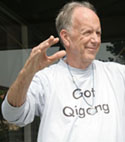
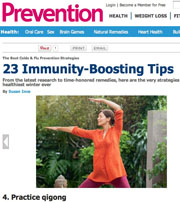 23 Ways to Boost Your Immune System. #4: Practice Qigong. This Chinese mind-body exercise combines breath control and slow movements to reduce stress and improve focus, but it may also help combat colds. Twenty-seven varsity swimmers in a University of Virginia study learned qigong, and during their seven-week training season, those who practiced it at least once a week got 70% fewer respiratory infections than swimmers who used it less.
23 Ways to Boost Your Immune System. #4: Practice Qigong. This Chinese mind-body exercise combines breath control and slow movements to reduce stress and improve focus, but it may also help combat colds. Twenty-seven varsity swimmers in a University of Virginia study learned qigong, and during their seven-week training season, those who practiced it at least once a week got 70% fewer respiratory infections than swimmers who used it less.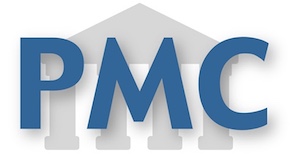
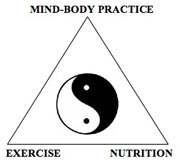



 A series of stickers featuring a cartoon bear performing the Ba Duan Jin Qigong exercise routine has been unveiled on pillars in the lobby of Pangxiejia Station on Metro Line 7 in Wuhan, Hubei province, Nov. 6, 2023. Titled "Office Ba Duan Jin," the series features the eight exercises for office workers to copy, accompanied by messages promoting aspects of traditional Chinese culture.
A series of stickers featuring a cartoon bear performing the Ba Duan Jin Qigong exercise routine has been unveiled on pillars in the lobby of Pangxiejia Station on Metro Line 7 in Wuhan, Hubei province, Nov. 6, 2023. Titled "Office Ba Duan Jin," the series features the eight exercises for office workers to copy, accompanied by messages promoting aspects of traditional Chinese culture.
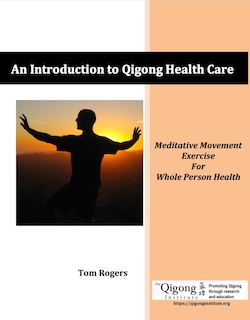

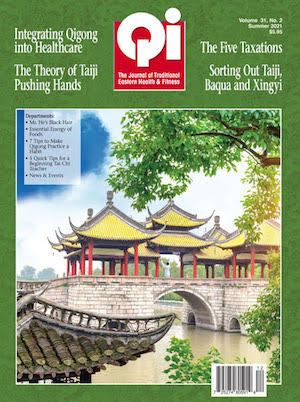
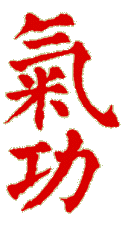
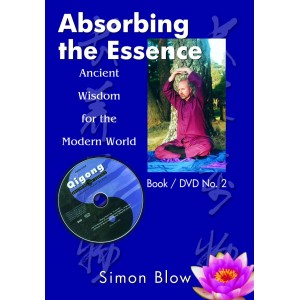
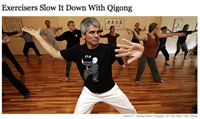
 There are thousands of different types of Qigong and Tai Chi. Arguably the most popular type of Qigong for martial arts is zhan zhuang (“jan jong”). This is also known as “stake standing”, and some forms are called "tree hugging". The practitioner stands motionless in a particular posture to develop internal strength. A widely practiced form of zhan zhuang is Wuji Qigong. It is very easy to practice yet is said to be difficult to master. Standing Qigong practice develops integrated body/mind awareness and focus, called “soong” in Chinese. Some masters train only using this form of Qigong. Shown is Chen style Tai Chi
There are thousands of different types of Qigong and Tai Chi. Arguably the most popular type of Qigong for martial arts is zhan zhuang (“jan jong”). This is also known as “stake standing”, and some forms are called "tree hugging". The practitioner stands motionless in a particular posture to develop internal strength. A widely practiced form of zhan zhuang is Wuji Qigong. It is very easy to practice yet is said to be difficult to master. Standing Qigong practice develops integrated body/mind awareness and focus, called “soong” in Chinese. Some masters train only using this form of Qigong. Shown is Chen style Tai Chi  Bioelectricity, Qi, and the Human Body
Bioelectricity, Qi, and the Human Body
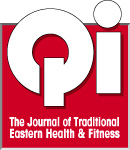

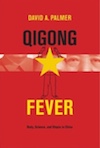 historical, anthropological, and sociological perspectives to describe the spread of the qigong craze and its reflection of key trends that have shaped China since 1949, including the search for a national identity and an emphasis on the absolute authority of science. Qigong offered the promise of an all-powerful technology of the body rooted in the mysteries of Chinese culture. However, after 1995 the scientific underpinnings of qigong came under attack, its leaders were denounced as charlatans, and its networks of followers, notably Falungong, were suppressed as "evil cults." According to Palmer, the success of the movement proves that a hugely important religious dimension not only survived under the CCP but was actively fostered, if not created, by high-ranking party members. Tracing the complex relationships among the masters, officials, scientists, practitioners, and ideologues involved in qigong, Palmer opens a fascinating window on the transformation of Chinese tradition as it evolved along with the Chinese state. As he brilliantly demonstrates, the rise and collapse of the qigong movement is key to understanding the politics and culture of post-Mao society.
historical, anthropological, and sociological perspectives to describe the spread of the qigong craze and its reflection of key trends that have shaped China since 1949, including the search for a national identity and an emphasis on the absolute authority of science. Qigong offered the promise of an all-powerful technology of the body rooted in the mysteries of Chinese culture. However, after 1995 the scientific underpinnings of qigong came under attack, its leaders were denounced as charlatans, and its networks of followers, notably Falungong, were suppressed as "evil cults." According to Palmer, the success of the movement proves that a hugely important religious dimension not only survived under the CCP but was actively fostered, if not created, by high-ranking party members. Tracing the complex relationships among the masters, officials, scientists, practitioners, and ideologues involved in qigong, Palmer opens a fascinating window on the transformation of Chinese tradition as it evolved along with the Chinese state. As he brilliantly demonstrates, the rise and collapse of the qigong movement is key to understanding the politics and culture of post-Mao society.